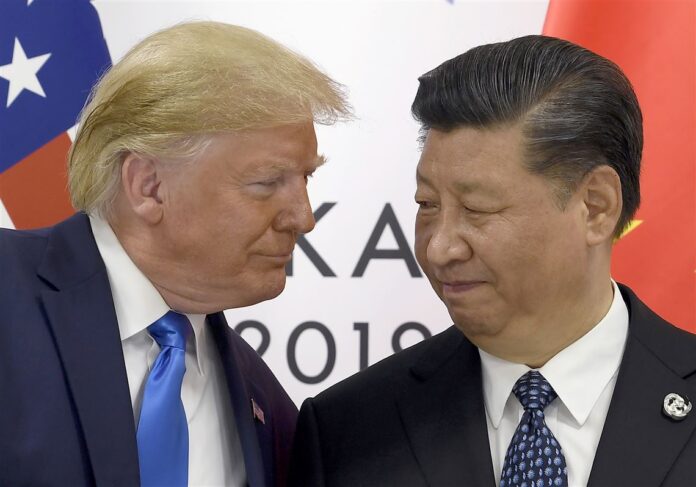The buzz around China tariffs has reached a fever pitch in 2025, with recent developments shaking up global trade. Just this week, President Donald Trump announced a landmark deal with China, easing tensions over rare earth mineral exports and tweaking tariff rates to 55%. This agreement, still pending final approval from Chinese President Xi Jinping, promises to secure a steady supply of critical materials like magnets and rare earths for the U.S. It’s a bold move that could reshape industries, from automotive to defense, but the road to stability remains bumpy. Let’s dive into what’s happening with China tariffs and why it matters.
Why China Tariffs Are Making Headlines
The saga of China tariffs began escalating in April 2025 when Trump imposed steep levies on Chinese goods, prompting Beijing to retaliate with export curbs on rare earths—minerals vital for everything from electric vehicles to missiles. China, which controls about 70% of global rare earth production, flexed its dominance, causing supply chain chaos. U.S. manufacturers warned of shortages, and European auto suppliers even halted production lines. The stakes were high, with both sides accusing each other of breaching a May trade truce struck in Geneva.
This week’s breakthrough, announced on June 11, 2025, shifts the narrative. After marathon talks in London, U.S. Commerce Secretary Howard Lutnick and Chinese negotiators hammered out a framework to ease export restrictions. China pledged to speed up rare earth shipments, while the U.S. agreed to allow Chinese students to remain in American universities—a sticking point in negotiations. However, Trump’s tariffs on Chinese goods, now at 55%, remain in place, signaling that the trade war isn’t over yet.
The Rare Earths Deal: A Game-Changer?
The deal’s focus on rare earths could be a lifeline for industries hit hard by China tariffs. These minerals, like dysprosium and terbium, are irreplaceable in high-tech manufacturing. China’s export controls, enacted in April, slashed global supplies, with only a quarter of auto suppliers’ license requests approved. This scarcity drove companies like India’s Maruti Suzuki to cut electric vehicle production by two-thirds. The new agreement aims to loosen these restrictions, but Beijing’s licensing system still gives it leverage, requiring detailed vetting of export applications.
Here’s a quick look at the deal’s key points:
- Rare Earth Supply: China will expedite shipments of critical minerals and magnets.
- Tariff Adjustments: U.S. tariffs on Chinese goods rise to 55%, up from 30%.
- Student Visas: Chinese students can stay in U.S. colleges, easing diplomatic tensions.
- Semiconductor Standoff: No progress on U.S. export controls for chip technology.
While the deal offers hope, experts warn that China’s grip on rare earths—producing 92% of the world’s processed supply—won’t loosen entirely. Beijing views these controls as a national security measure, not just a trade tactic.
What’s Next for China Tariffs?
The future of China tariffs hinges on the final Trump-Xi approval, expected soon after their June 2025 talks. If ratified, the deal could stabilize supply chains, but legal challenges loom. A U.S. appeals court recently upheld Trump’s tariffs, but some levies face scrutiny under the International Emergency Economic Powers Act. Meanwhile, China’s exports to the U.S. dropped 35% year-over-year in May, showing the trade war’s toll on both economies.
Industries are already adapting. Some U.S. automakers are eyeing production shifts to China to bypass rare earth curbs, a move that contradicts Trump’s goal of bringing manufacturing home. On the flip side, the U.S. is investing in domestic rare earth production, with the Pentagon allocating over $439 million since 2020 to build a local supply chain. These efforts, though, are years from fruition.
The Bigger Picture
The China tariffs saga is more than a trade spat—it’s a battle over global economic power. Both nations are weaponizing their strengths: China with rare earths, the U.S. with tech export controls and market access. The London framework is a step toward détente, but unresolved issues, like semiconductor restrictions, keep tensions simmering. For businesses and consumers, the ripple effects are real—higher costs for goods like cars and electronics are likely if tariffs persist.
As we watch this unfold, one thing is clear: China tariffs will shape the global economy for years to come. The Trump-Xi deal offers a glimmer of stability, but the trade war’s shadow looms large. Stay tuned for updates, and let’s see if this agreement holds.
Keep up with the latest on China tariffs and global trade by subscribing to our newsletter for real-time insights.
